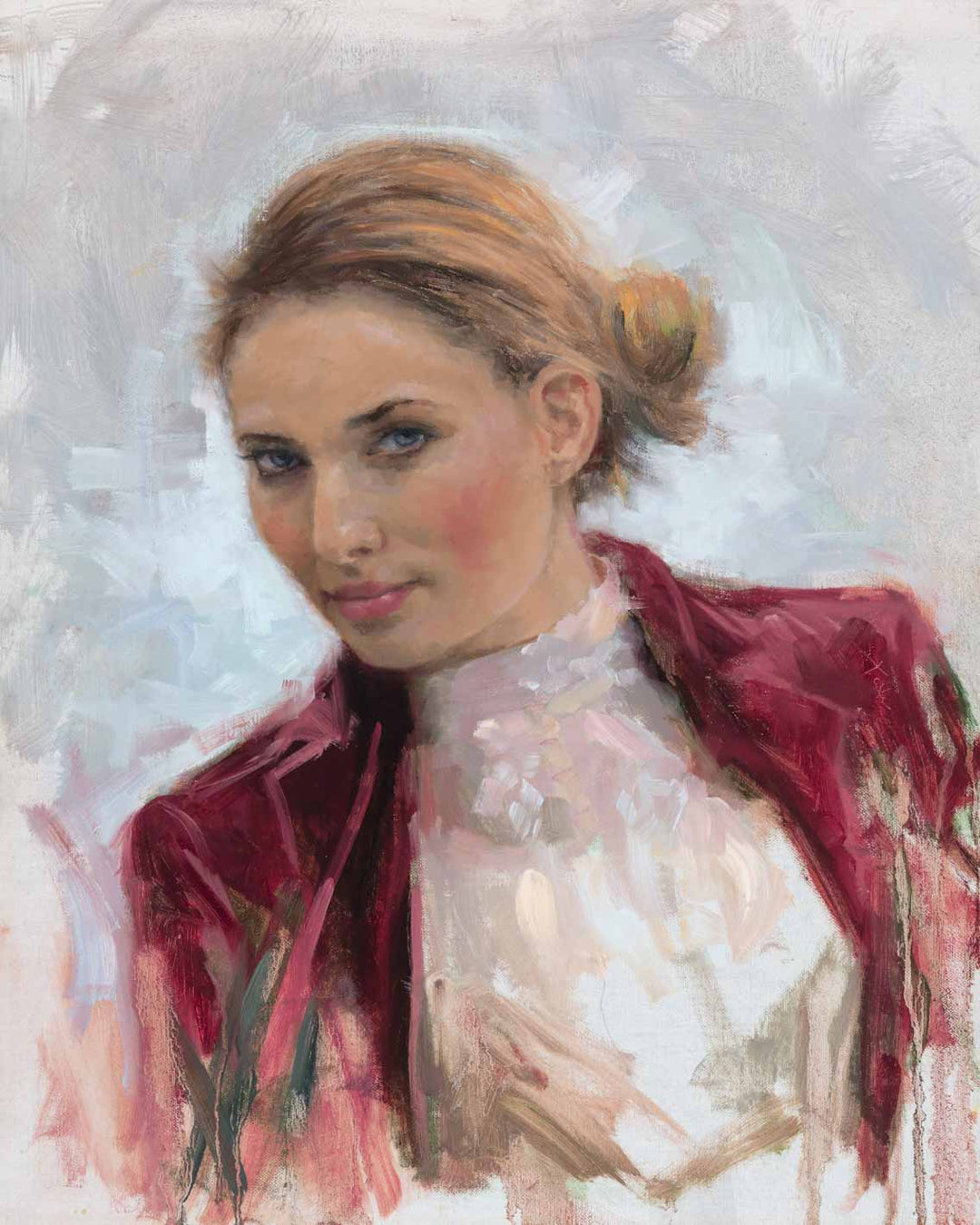Discover Breathtaking One-of-a-kind Oil Paintings for Sale Online
Discover Breathtaking One-of-a-kind Oil Paintings for Sale Online
Blog Article
Discovering Everything About Oil Paints: A Guide to Recognizing Their Appeal and Worth
Oil paints have actually mesmerized target markets for centuries, offering a glimpse into the imaginative proficiency of different eras. Their rich history is intertwined with cutting-edge strategies and profound psychological expression. Recognizing the products and methods behind these artworks can improve appreciation. Furthermore, the marketplace for oil paintings provides possibilities for collection agencies and financiers alike. As one discovers this interesting globe, the question arises: what makes an oil painting absolutely useful?
The History of Oil Paint: A Journey With Time
Oil painting has roots that date back to old times, it genuinely flourished throughout the Renaissance, when musicians uncovered its adaptability and rich color potential. Early instances can be traced to the 7th century, with strategies developing significantly across societies. The medium came to be noticeable in Northern Europe in the 15th century, especially with the jobs of musicians like Jan van Eyck, who originated its use for detailed realism and lively hues. This duration marked a departure from tempera paints, enabling better deepness and structure. As oil painting spread, it affected numerous musicians, causing masterpieces by renowned numbers such as Leonardo da Vinci and Rembrandt. The tool's legacy continues, shaping the art globe well into modern times.
Recognizing Oil Paints: Products and Techniques
As artists discover the world of oil paints, they experience a diverse selection of products and strategies that define this tool. The primary elements of oil paint include pigments, which offer shade, and drying oils, such as linseed, that bind the pigments and facilitate application. Various additives can customize the paint's texture and drying time, enhancing convenience. Methods like glazing, where transparent layers are built up, and impasto, which entails using thick paint, enable different visual results. Furthermore, making use of brushes, palette knives, and even fingers can develop one-of-a-kind textures and coatings. Understanding these methods and products makes it possible for artists to totally express their creativity and achieve the wanted impact in their artwork.
The Role of Color in Oil Paintings
Color plays a pivotal function in oil paints, influencing both aesthetic charm and emotional resonance. Understanding color theory fundamentals, consisting of the relationships between shades, can improve a musician's capability to convey mood and ambience. Additionally, understanding shade mixing methods permits better depth and richness in a painting's scheme.

Color Theory Fundamentals
Comprehending color theory is vital for musicians collaborating with oil paints, as it forms the structure for producing harmonious and visually engaging compositions. Shade concept incorporates the research of exactly how shades communicate, the shade wheel, and the partnerships in between key, additional, and tertiary colors. Artists utilize complementary shades to improve contrasts and produce prime focus, while similar colors promote unity and cohesiveness within an item. Additionally, the ideas of warm and awesome colors affect the understanding of depth and area in a paint. Realizing these concepts permits artists to adjust color successfully, guiding the audience's eye and connecting their desired message. Proficiency of shade theory eventually enriches a musician's ability to communicate feelings and concepts via their job.
Psychological Impact of Color
The psychological impact of color in oil paints plays a critical role in how customers connect and perceive with art work. Shades evoke particular sensations and moods, affecting the visitor's emotional state. For circumstances, cozy shades like reds and oranges can create a feeling of heat and power, while amazing tones such as blues and eco-friendlies commonly stimulate calmness or introspection. Artists tactically select shade palettes to enhance narrative elements, assisting the target market's emotional journey. The saturation and comparison of colors better intensify these effects, attracting attention and developing focus. Eventually, the interplay of colors in oil paints not just improves their visual appeal but likewise works as an effective tool for psychological expression, enhancing the audience's experience and analysis.
Shade Mixing Techniques
While numerous facets of oil paint add to the total make-up, understanding shade mixing techniques is crucial for attaining preferred results and deepness. Shade mixing can be approached through various techniques, consisting of the additive and subtractive procedures. Additive mixing includes combining shades of light, while subtractive mixing depends on pigments, where shades mix to create brand-new shades. Artists commonly utilize a limited scheme to create harmonious works, recognizing the partnerships in between primary, second, and tertiary shades. Methods such as glazing and scumbling additionally enhance depth and luminance. By skillfully mixing colors, an artist can stimulate emotions, create prime focus, and accomplish a feeling of realism, inevitably raising the paint's aesthetic and emotional influence.
Famous Oil Painters and Their Iconic Works

Renowned for their proficiency of color and method, oil painters have actually created a few of the most popular artworks in background. Renowned artists like Vincent van Gogh astounded target markets with his emotive brushwork in "Starry Evening," while Claude Monet's "Impression, Daybreak" prepared for Impressionism. Leonardo da Vinci's "Mona Lisa" remains an enduring icon of creative brilliant, showcasing his ability in capturing human expression. Rembrandt's "The Evening Watch" illustrates his ingenious use of light and darkness. Various other significant numbers include Pablo Picasso, that changed modern-day art with his bold trial and error in jobs like "Les Demoiselles d'Avignon," and Georgia O'Keeffe, whose vibrant depictions of flowers and landscapes helped define American innovation. Each artist's distinct style contributed significantly to the oil paint landscape.
Just how to Assess the Quality of an Oil Painting
Assessing the high quality of an oil painting includes a mindful analysis of workmanship techniques, as well as an analysis of shade and structure. Observing brushwork, layering, and the application of paint can expose the musician's ability level. Furthermore, the interplay of shades and the total plan of components add substantially to the paint's visual value.
Evaluating Craftsmanship Techniques
A precise assessment of workmanship techniques is essential for determining the quality of an oil painting. Evaluators ought to first examine the application of paint; thick, distinctive brushstrokes may suggest an experienced hand, while excessively consistent applications could show an absence of deepness. oil paintings for sale. The layering technique is also vital; the presence of glazes and varied thickness can enhance luminosity and intricacy. Additionally, the top quality of the materials made use of, such as the canvas and pigments, plays a considerable role in durability and overall visual. Focus to information in elements like sides and shifts between colors shows the artist's commitment to their craft. Eventually, these methods contribute to the painting's psychological impact and market price, serving as indications of the artist's skill and intent
Evaluating Shade and Make-up
While reviewing the high quality of an oil painting, one need to concentrate on the interaction of shade and structure, as these aspects are fundamental to the art work's overall effect. Shade selections can evoke emotions and develop mood; consequently, the musician's palette should be examined for consistency and contrast. A well-balanced composition directs the viewer's eye and develops a feeling of unity. Musicians typically employ techniques like the guideline of thirds or leading lines to boost visual passion. Furthermore, making use of light and shadow can include depth, improving the three-dimensionality of the painting. Inevitably, a successful oil painting marries shade and composition, engaging the audience and welcoming a deeper recognition of the artist's vision and method.
Caring for and Preserving Oil Paintings
Proper treatment and preservation of oil paints is necessary for keeping their integrity and longevity. To shield these art work, it is crucial to show them away from direct sunshine, which can cause fading and discoloration. Keeping a secure setting with regulated temperature and humidity further aids in preventing damages. Cleaning up should be done delicately making use of a soft, dry towel, staying clear of any extreme chemicals that could hurt the paint or varnish. Normal inspections for signs of deterioration, such as cracking or flaking, are advisable. When storing or carrying oil paintings, correct padding and framework are needed to prevent physical harm. Inevitably, attentive treatment adds to the visual appeal and worth of oil paintings in time.
The Marketplace for Oil Paints: Accumulating and Investing
Understanding the marketplace dynamics for oil paintings is crucial for enthusiasts and investors alike. The value of these art work is influenced by various elements, consisting of the musician's online reputation, historical importance, and current fads. Enthusiasts commonly seek pieces that resonate personally while taking into consideration possible appreciation in value. website Galleries and public auctions act as main venues for buying and selling, with costs varying based on need and rarity. Purchasing oil paints needs research right into the marketplace, along with an understanding of credibility and provenance. Additionally, arising artists might use chances for significant returns, while developed names can regulate high prices. Generally, a strategic method to accumulating can yield both aesthetic pleasure and financial incentives.

Regularly Asked Concerns
What Are the Environmental Influences of Oil Paint Materials?
The ecological influences of oil painting materials include the release of unstable natural substances (VOCs), hazardous waste generation, and source extraction for pigments. These elements add to air pollution and environmental deterioration, elevating concerns among eco conscious musicians and consumers.
Just How Do Different Canvases Impact Oil Paint Results?
Various canvases influence oil paint results considerably. Absorbency, structure, and surface area high quality can change paint application, drying times, and shade vibrancy. Artists typically select particular canvases to attain preferred impacts and improve their creative expression.
Can Oil Paintings Be Brought Back if Harmed?
Oil paintings can certainly be brought back if damaged. Specialist conservators utilize numerous techniques to fix tears, clean surfaces, and address staining, guaranteeing that the artwork keeps its original elegance and value for future generations.
What Are the Signs of an Initial Oil Painting?
The indications of an initial oil paint consist of visible brush strokes, appearance variants, and an irregular canvas weave (oil paintings for sale). Furthermore, credibility might be validated with provenance, trademarks, and the existence of a varnish layer one-of-a-kind to oil mediums
Just How Has Modern Technology Influenced Modern Oil Painting Techniques?
Technology has actually substantially influenced contemporary oil painting strategies by presenting electronic devices for planning, enhanced materials for texture and long life, and on the internet systems for selling and sharing art, thereby expanding musicians' creative opportunities and audience reach. Oil paint has origins that date back to old times, it truly thrived during the Renaissance, when musicians uncovered its adaptability and rich color capacity. The emotional effect of shade in oil paints plays an important role in exactly how visitors connect and regard with artwork. While numerous facets of oil painting contribute to the general composition, grasping color blending techniques is important for attaining wanted effects and deepness. Reviewing the high quality of an oil paint involves a cautious analysis of workmanship methods, as well as an analysis of shade and structure. While evaluating the top quality of an oil paint, one must concentrate on the interaction of color and structure, as these elements are basic to the artwork's total impact.
Report this page